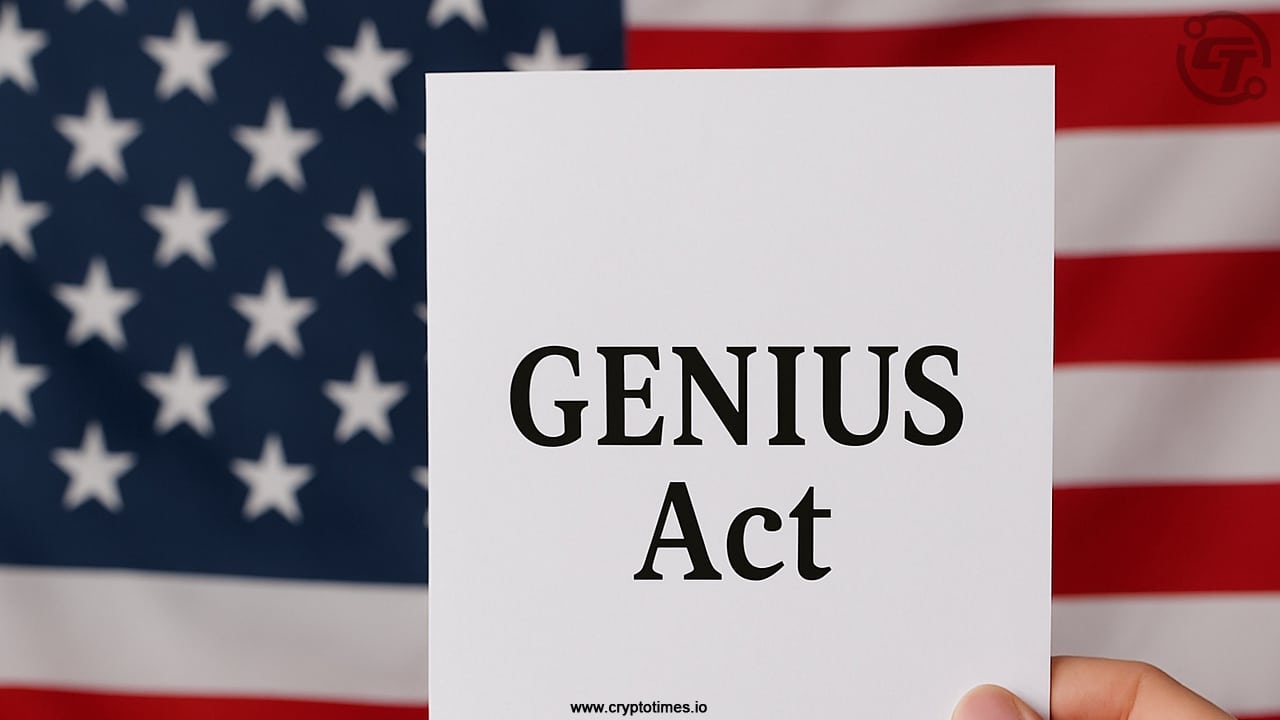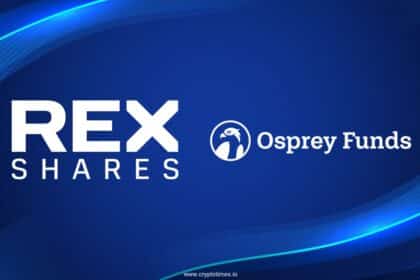The signing into law of the GENIUS Act has opened the door to a massive, $3.7 trillion opportunity, but only for those who can successfully navigate the regulatory hurdles introduced by the new regulations.
With the GENIUS Act, the U.S. finally has a federal regulatory framework for stablecoins, and one of the most important stipulations is that they can show 100% collateralization with U.S. dollars or short-term Treasury bonds.
It marks the end of the crypto industry’s Wild West reputation, creating the conditions for a multi-trillion dollar market opportunity, but it may also spell the beginning of a massive industry shakeout, where only the richest and most innovative crypto companies survive.
Who Are The Potential Winners?
One of the companies that’s poised to emerge as a clear winner in the stablecoin race is Circle, which has been working towards this moment since its founding in 2018. Since the beginning, Circle has been laser focused on building the necessary compliance systems to appease regulators, shunning the yield-chasing strategies of rival stablecoin issuers.
USDC, which has over $64 billion in market cap, appears to meet most of the conditions of the GENIUS Act already. It publishes monthly attestations, its reserves are entirely based on U.S. dollars and Treasury assets, and it boasts good relations with both crypto exchanges and traditional financial institutions. Moreover, with its $61.5 billion market capitalization, USDC can scale to either challenge, or partner with traditional banks, which are also set to embrace stablecoins.
Many of those banks can also emerge as winners. The likes of Bank of America, Wells Fargo and JPMorgan Chase could very quickly become some of the biggest players, as the GENIUS Act allows their subsidiaries to issue stablecoins with very minimal additional requirements.
Banks have several clear advantages, including strong existing relationships with regulatory bodies and compliance systems in place, as well as access to Federal Reserve accounts. They also have consumer trust, as well as enormous balance sheets, ready to back multibillion market cap stablecoins the moment they launch. Moreover, they have existing payment rails just waiting to be integrated with digital dollars.
Andrei Grachev, managing partner of the stablecoin issuer Falcon Finance, said the GENIUS Act will likely be a signal for traditional banks to start ramping up pilot projects for stablecoins in areas such as cross-border settlements and corporate treasury management.
“They’ll still need to proceed cautiously, investing in compliance tech to navigate the new frameworks,” he said. “Overall, we expect to see financial firms shift from observers to active participants, fostering more institutional-grade products while mitigating risks like custody and privacy concerns.”
The other likely winners from the GENIUS Act are the custodial infrastructure firms, such as BitGo, Coinbase Custody and Anchorage Digital, because they’ve already built the compliant custody services that stablecoin issuers will require. The strict segregation requirements stipulated by the GENIUS Act mean that custodial services will become mandatory for all stablecoin issuers, creating the regulatory moats required for compliance.
Who Might Lose?
On the other hand, the future under the GENIUS Act is less certain for Tether, the issuer of the world’s largest stablecoin, USDT, which boasts a market cap of over $120 billion.
The issue for Tether centers around its lack of transparency in reserve publishing. It has few friends in the regulatory world due to its reluctance to allow full audits of its reserves. Rather, it has historically made “attestations” backed by promises from select auditors, rather than independent entities. It’s thought that Tether’s assets include substantial commercial papers and foreign assets that don’t meet the requirements of the GENIUS Act, while its offshore legal structure complicates things further.
Tether may well decide to resist regulation instead of working towards compliance, and that could ultimately see it retreat from U.S. markets, creating a huge opportunity for compliant competitors to fill the gap it vacates.
Besides Tether, there are also questions on algorithmic stablecoins, which have never quite recovered from the reputational damage caused by the collapse of the $60 billion TerraUSD economy in 2022. Under the GENIUS Act, algorithmic stablecoins—including USDD, sUSD, CUSD, and others—are effectively prohibited from compliance, because they rely extensively on smart contracts and crypto-based reserves. In effect, the Act completely eliminates all algorithmic stablecoins. Moreover, DeFi protocols that issue unbacked synthetic dollars will also be barred.
They’ll likely be joined by the numerous foreign stablecoin issuers that operate outside of the U.S. The GENIUS Act proscribes strict licensing requirements that essentially rule out offshore firms, unless they create a U.S.-based entity. This may well force many foreign firms to choose between regulatory independence or access to U.S. markets. Many of these players are further burdened by the extensive costs of compliance under the GENIUS Act.
“The greatest challenge for smaller crypto firms is the heightened compliance burden that will disproportionately strain their resources, potentially leading to consolidation or exits from the U.S. market,” Grachev said. “They simply can’t afford to keep a retinue of highly-paid lawyers working around the clock to ensure that all the right boxes have been ticked.”
Grachev added that smaller U.S. crypto firms will also face challenges under the legislation, because they’ll be forced to operate under more stringent regulatory requirements than their non-U.S. competitors, who don’t face the same hurdles.
“The risks include increased legal costs, barriers to entry for startups that lack institutional backing and a tilt towards larger entities than can afford to build robust reporting and KYC systems,” Grachev predicts.
Uncertainty Abounds
However, there is a caveat to all of this, for the GENIUS Act carries a $10 billion threshold, which can lead to the creation of a new category of mid-tier stablecoin issuers that will be less heavily regulated than the larger players. Grachev noted there has been a lot of discussion around “exemptive relief” and “sandbox frameworks” with state-level regulations.
“If the framework includes tiered regulations, it could protect smaller firms from predatory practices, but that’s not guaranteed without thoughtful calibration,” he said.
The advantage of state-level regulation is that it significantly lowers compliance-related costs, and often has much faster approval processes that can be leveraged by smaller, nimbler startups. They could find a profitable niche, perhaps partnering with regional payment processors and state-chartered banks to address smaller local markets, especially if they’re willing to accept limits on their growth.
The U.S. Treasury Secretary Dave Bessent’s prediction that the stablecoin market will grow to $3.7 trillion by the end of the decade is contingent not only on institutional adoption of these assets, but also political conditions. According to Grachev, there’s a risk of continued political polarization around crypto, which could entrench a cycle of “boom-and-bust sentiment”.
If the present Trump White House ends up being replaced by a less crypto-friendly Democratic administration, the adoption of stablecoins could find itself pegged back by much stiffer regulatory requirements.
“Mainstream adoption can be hindered by erratic policy swings, and the prospect of partisan gridlock risks discouraging institutional investment,” Grachev warned. “The consequences of this would be slower integration into everyday finance and a perception of the U.S. as a regulatory laggard, which would undermine the dollar’s stablecoin dominance.”
Also Read: Coinbase, PayPal offer stablecoin returns despite GENIUS Act










